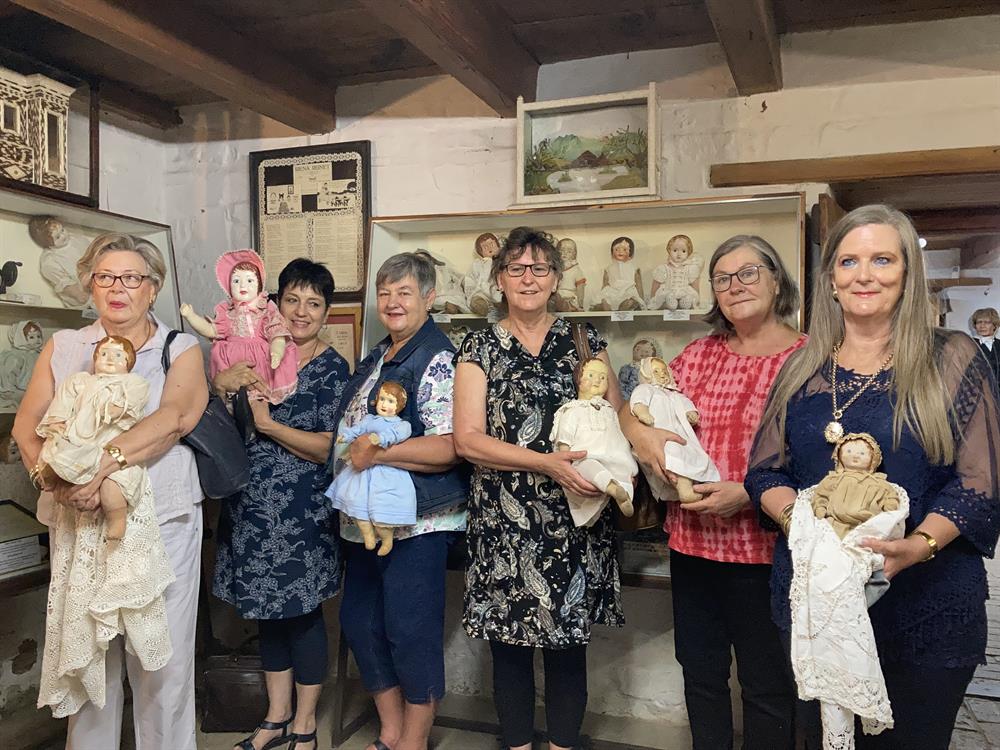GRAAFF-REINET NEWS - Seven members of the Old Dolls and Toys Group travelled from Bloemfontein to visit the unique collection of Graaf-Reinet dolls at the Reinet House Museum last Saturday - each with a doll from their own collection.
This 28-member group was established in 2019, drawn together by their passion for collecting. Fourteen members are active collectors with Lorraine Mellet having a collection of 4 000 dolls.
Betsie Roux, the chairperson of the group and a skilled conservationist tells, "As a child, I had several dolls and the one that my grandfather gave to me on my first birthday is still part of my collection. Dolls tell a story of love and they are full of personality and charm.
Therefore we as a group fervently try to find and replace these lost childhood toys and dolls to honour our youth and also to save dolls for the generations to come and to educate them."
Roux has seven Graaff-Reinet dolls.
Local Graaff-Reinet doll collector, Nicolene Wentzel, took the Bloemfontein group on a tour of the town. Many of the group had only passed through Graaff-Reinet and they were amazed at the wealth of cultural excursions the town has to offer.
They ended their visit with tea at the Drostdy Hotel, vowing to return to the town. The earliest known dolls are African-Egyptian dolls made from papyrus leaves and wood, dating back to 2000BC.
 Many of the group had only passed through Graaff-Reinet and they were amazed at the wealth of cultural excursions the town has to offer.
Many of the group had only passed through Graaff-Reinet and they were amazed at the wealth of cultural excursions the town has to offer.
While familiar as beloved childhood playthings, dolls have educational and therapeutic qualities. They also form part of valued collections.
During the Second World War, with no dolls imported into the country, Graaff-Reinet became the centre of doll making in South Africa.
In 1914, the Laubscher family, creative innovators, started the business by chance, a response to their young niece's desire for a doll for Christmas. Inspired by an American rag doll, the family got to work. The soft cloth doll was a great hit, not only with their niece Marie but within their community.
Orders rolled in. Soon they were in production, employing locals to assist with the doll production. These were the first "mass" produced dolls in South Africa, although each one was hand-sewn and its features carefully hand-painted.
As Sundré Havenga notes in her article on the Graaff-Reinet doll: "As with so many dolls, very few survived the hardship of being played with. Those that outlived their owner's childhood did not outlive the ravishes of time. This makes the Graaff-Reinet doll a sought-after acquisition for many collectors."
Should anyone wish to join or contact the group call Betsie Roux on 082 413 9275.
'We bring you the latest Graaff-Reinet, Karoo news'
















